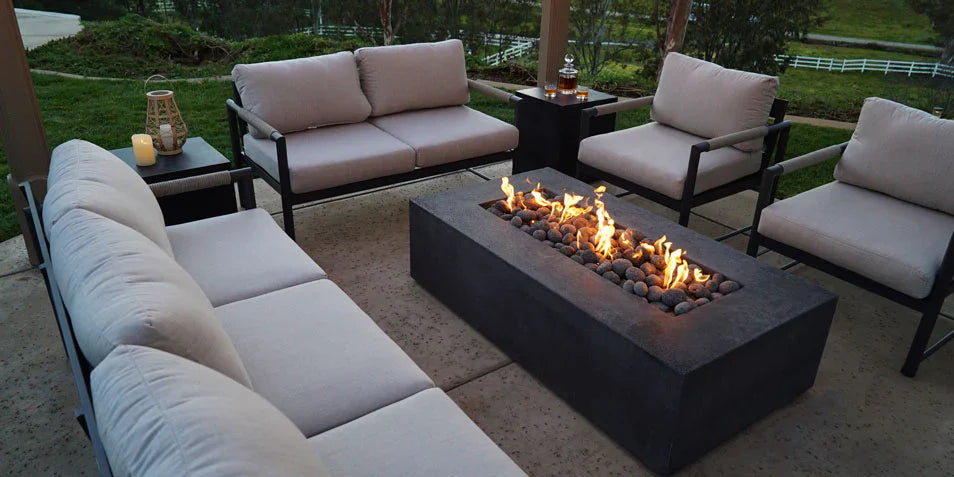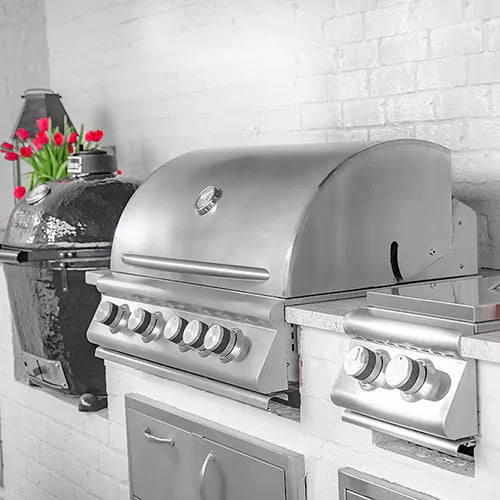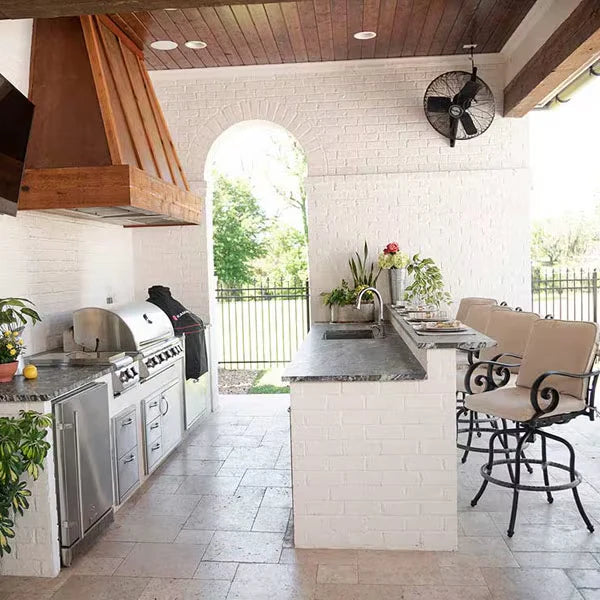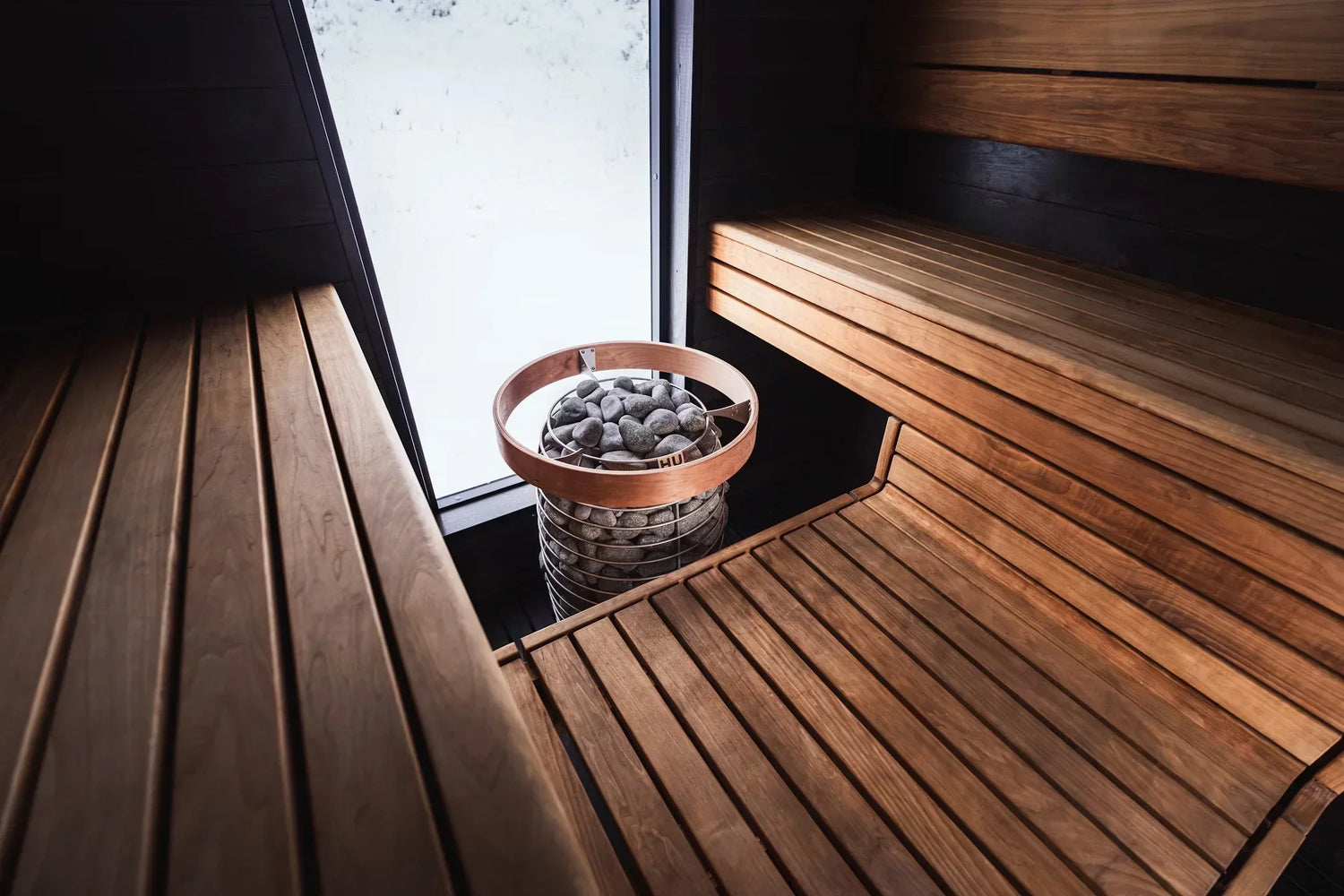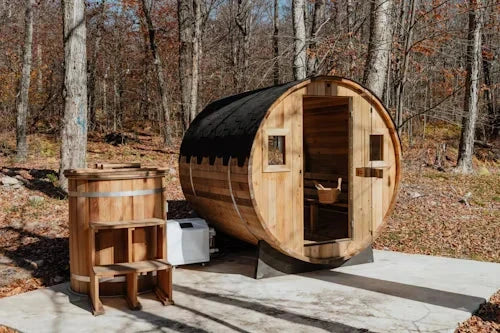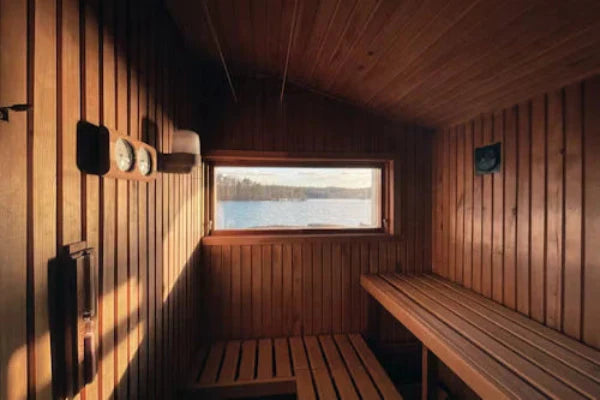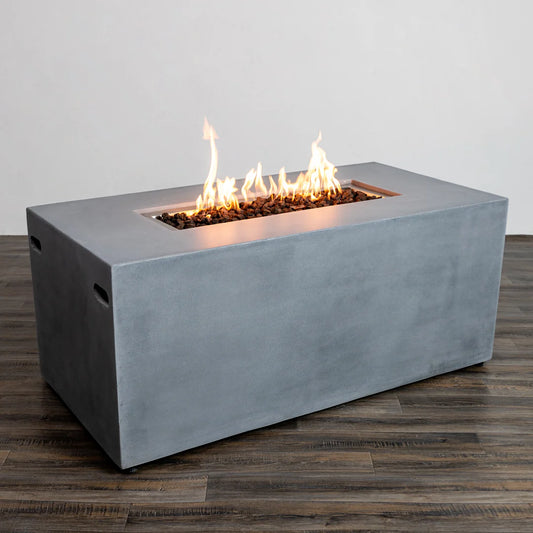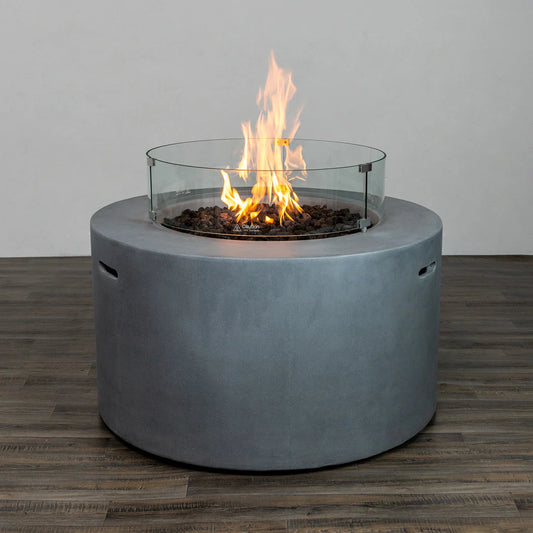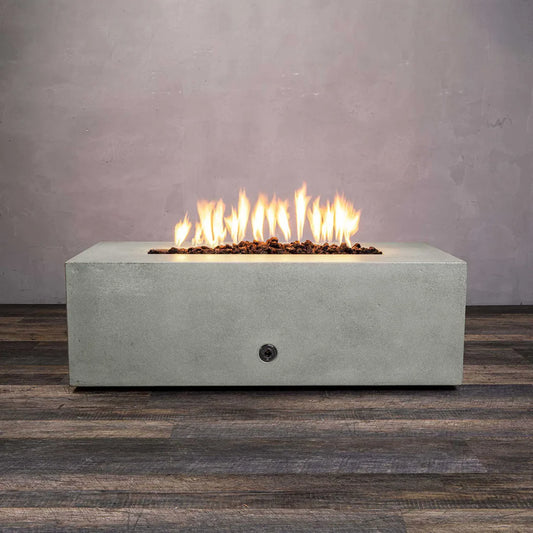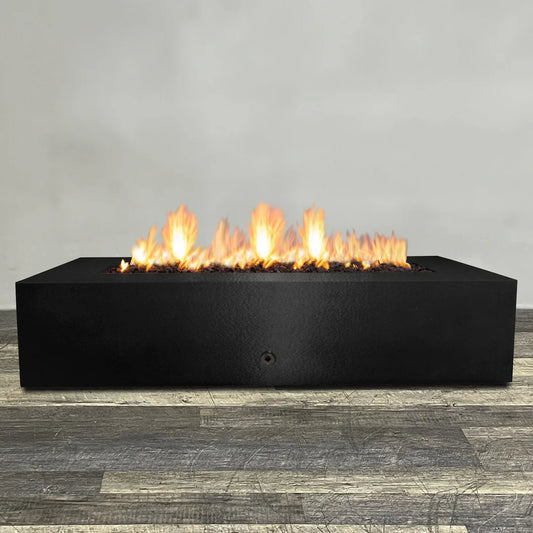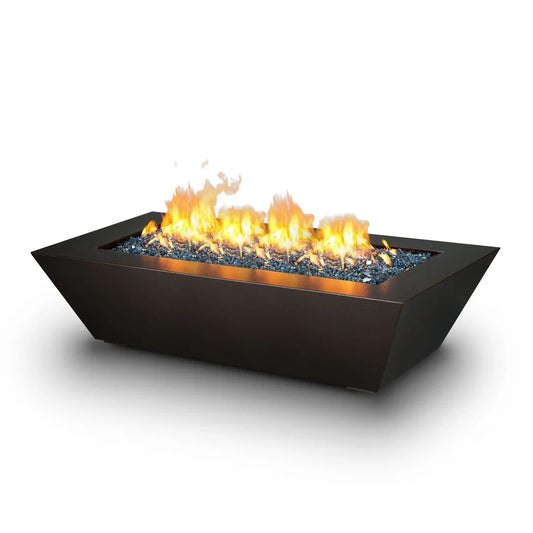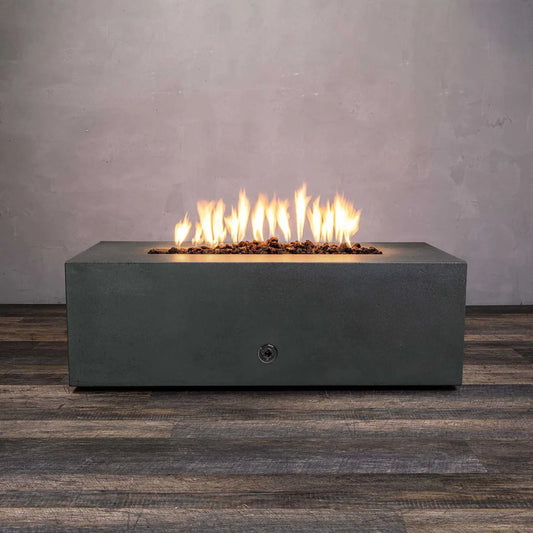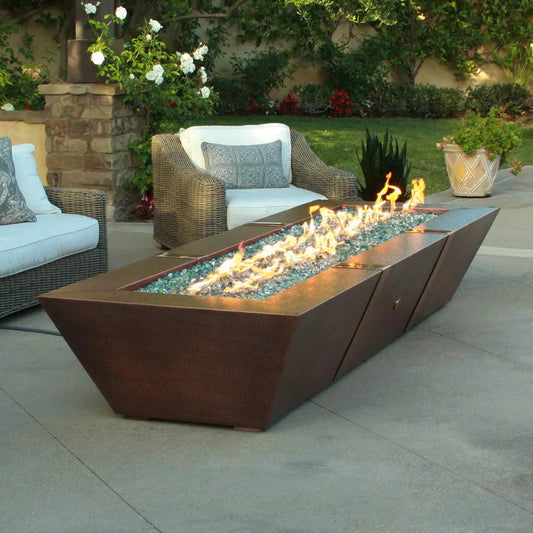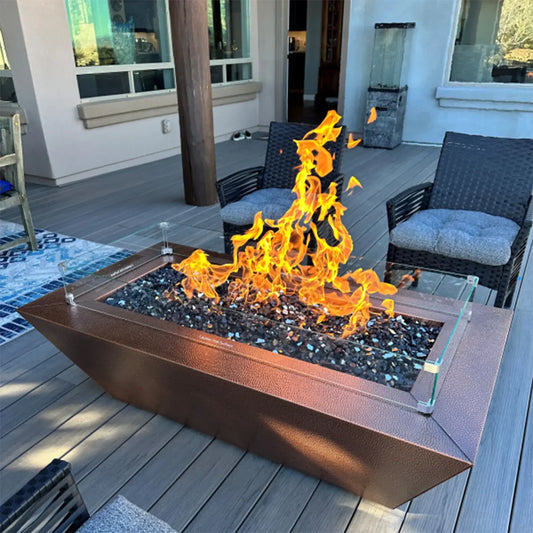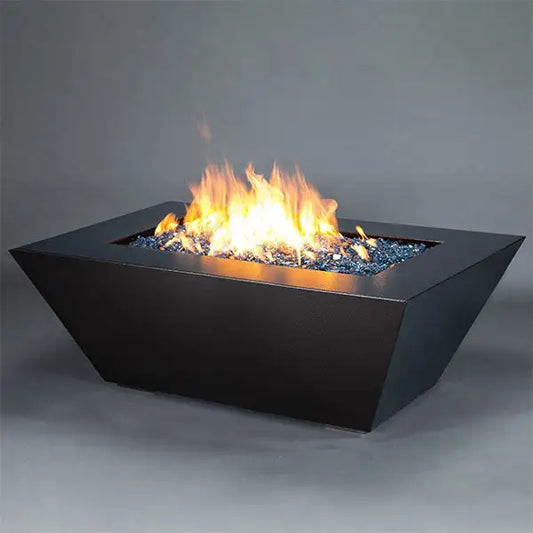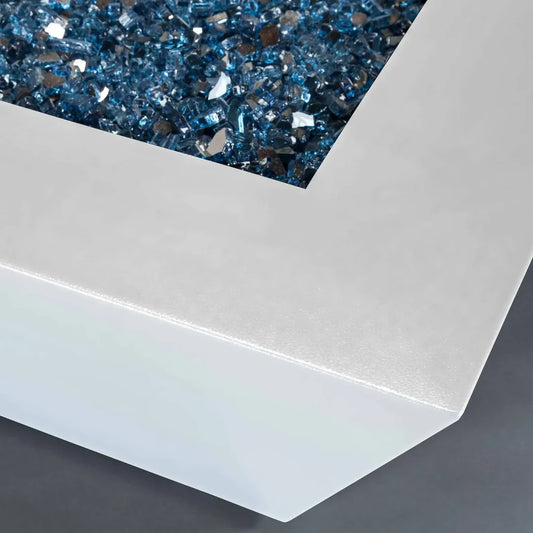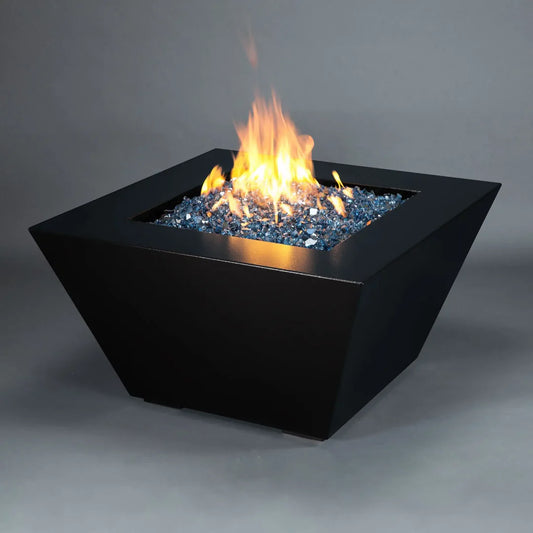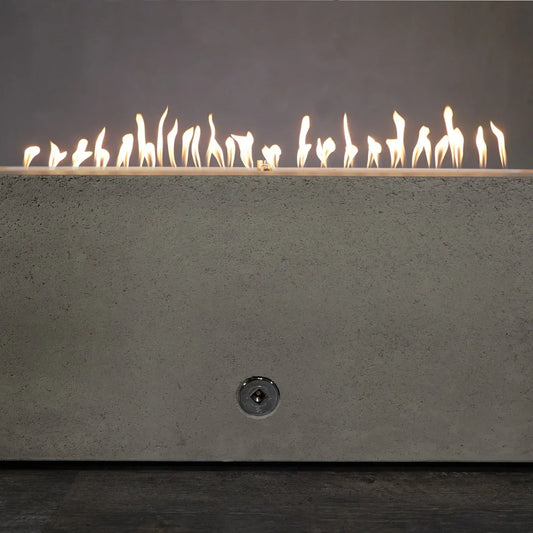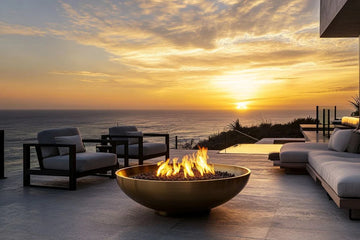
Outdoor Fire Pits
Bring warmth and atmosphere to your outdoor space with a fire pit that’s built to stand out. From clean-burning designs to bold, sculptural shapes, our collection adds comfort and character to any setup.
Trending Fire Pits
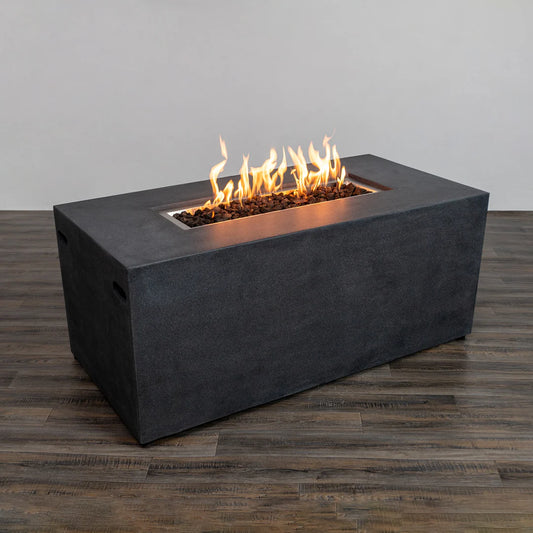
Beton 55 Inch Rectangle Fire Pit With Propane Tank Inside by Starfire Designs
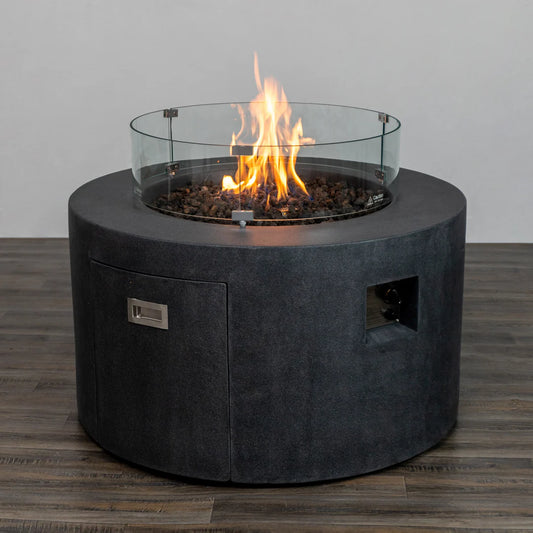
Beton 42 Inch Round Concrete Fire Pit With Hidden Propane Tank by Starfire Designs
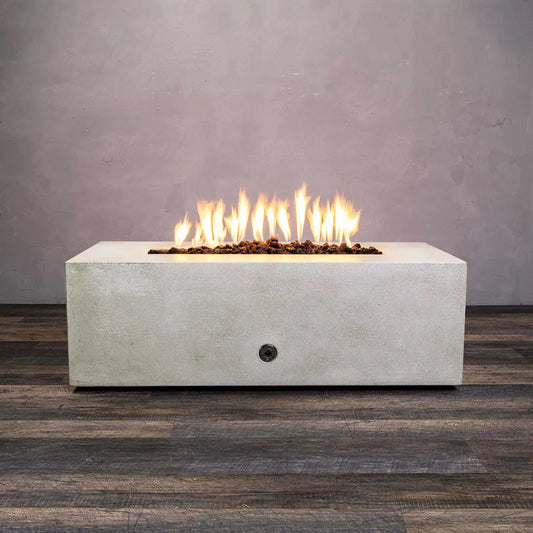
Rustic 48 X 32 Inch Rectangle Concrete Fire Pit by Starfire Designs
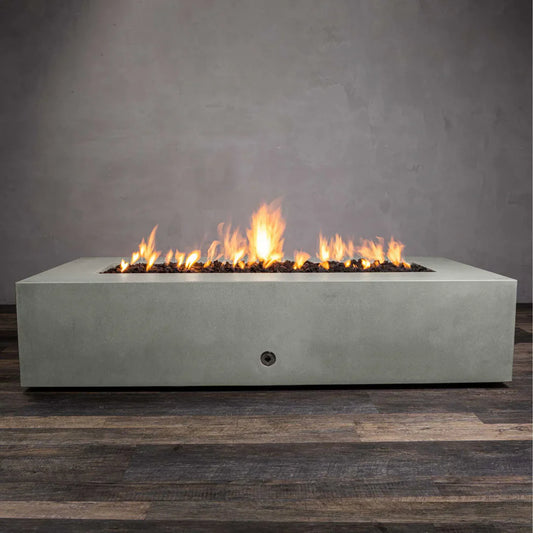
Gravity 72 x 38 Inch Rectangle Concrete Fire Pit by Starfire Designs
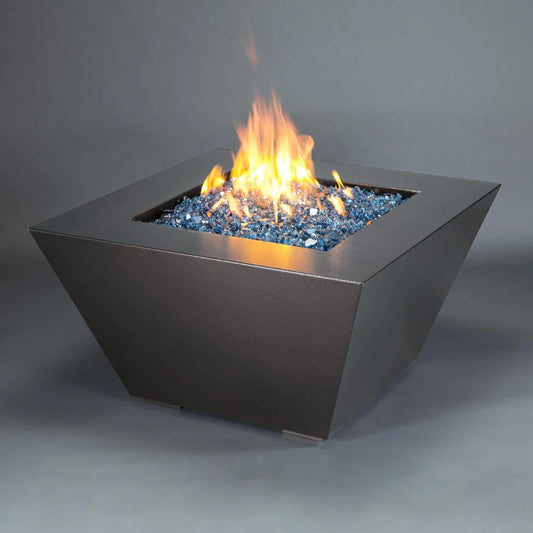
Steel Mill Propane Fire Pit with Hidden Tank by Starfire Designs

Gravity 60 x 24 Inch Concrete Gas Fire Pit by Starfire Designs
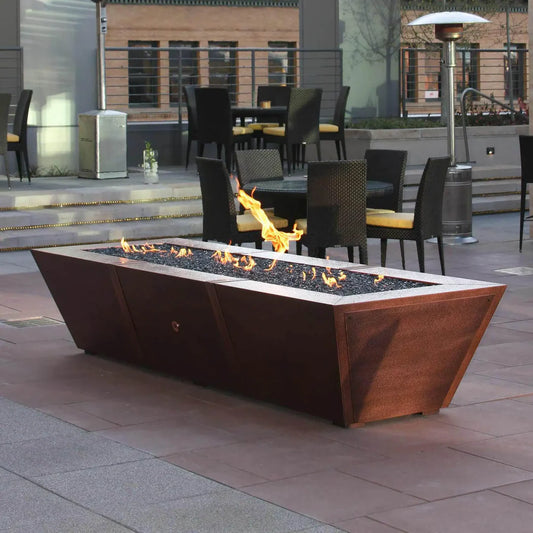
Spartan 10 Foot Copper Fire Pit by Starfire Designs
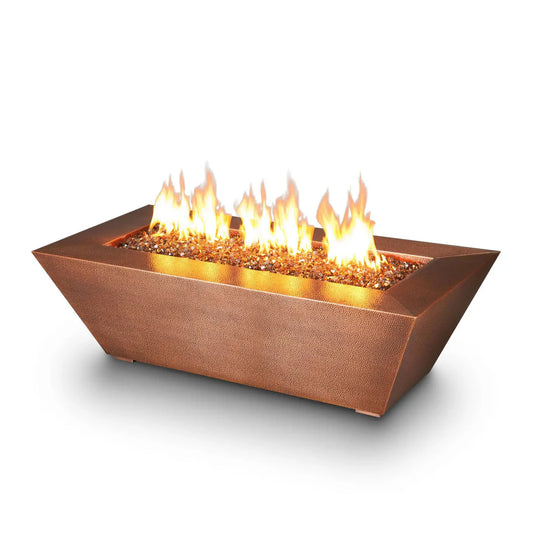
Canyon 60 x 32 Inch Copper Fire Pits by Starfire Designs
Fire Pits With Hidden Propane Tank Collection
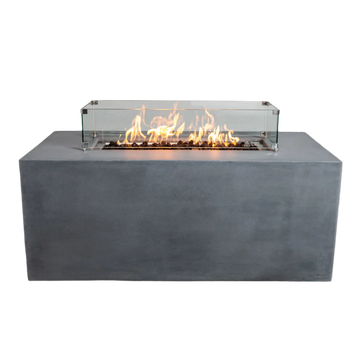

Beton 55 Inch Rectangle Fire Pit With Propane Tank Inside by Starfire Designs

Beton 42 Inch Round Concrete Fire Pit With Hidden Propane Tank by Starfire Designs
Hottest Deals

Steel Mill Propane Fire Pit with Hidden Tank by Starfire Designs
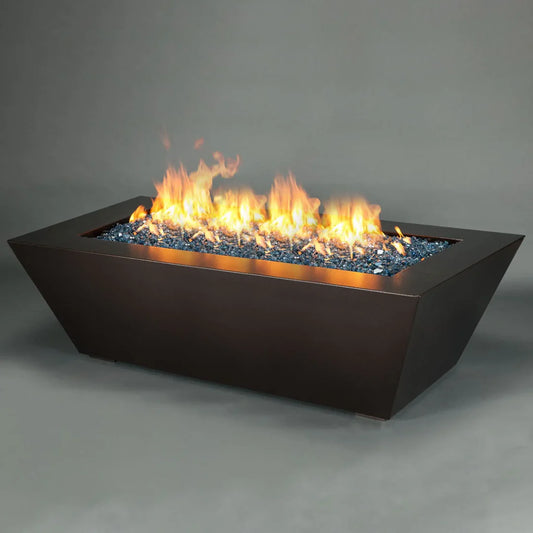
Steel Mill 72 x 38 Inch Fire Pit Rectangle by Starfire Designs
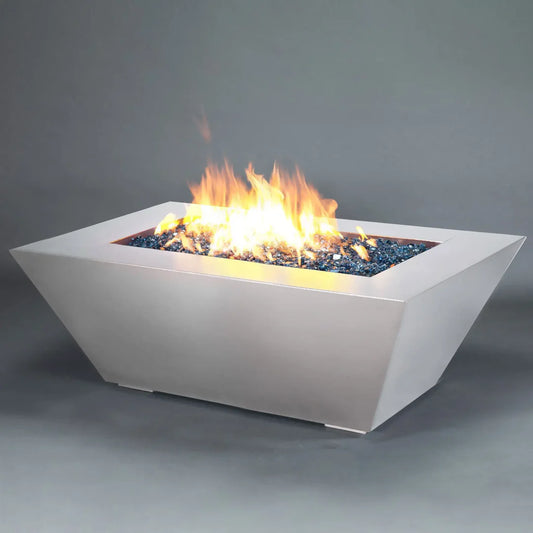
Steel Mill 60 x 32 Fire Pit Table Rectangle by Starfire Designs
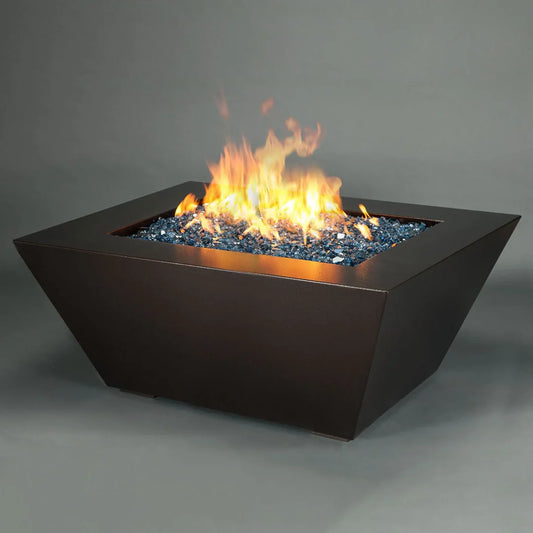
Steel Mill 48 x 32 Inch Rectangle Fire Pit Table by Starfire Designs
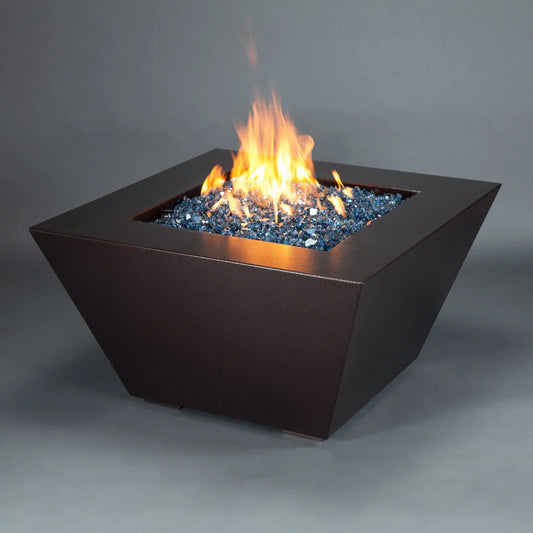
Steel Mill 48 Inch Square Fire Pit Table by Starfire Designs

Steel Mill 40 Inch Square Fire Pit Metal by Starfire Designs
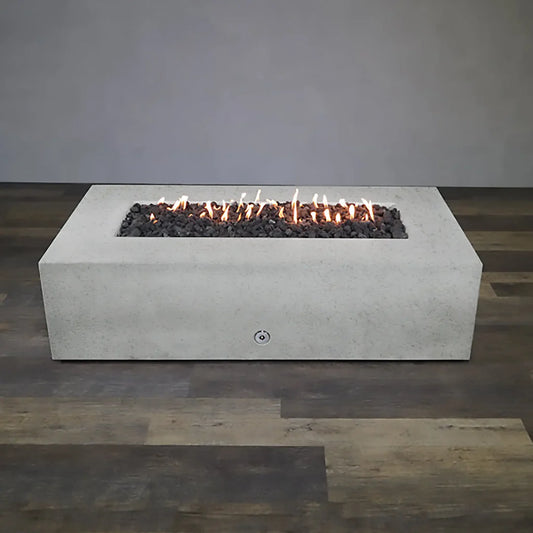
Rustic 72 x 38 Inch Rectangle Gas Fire Pit by Starfire Designs

Spartan 10 Foot Copper Fire Pit by Starfire Designs
Blog posts
Natural Gas vs Propane Fire Pit Tables: What’s the Better Choice for You?
How Long Does a Tank of Propane Last? Here’s the Real Answer
Questions To Help You On Your Buying Journey
The right fire pit depends on your space, how you plan to use it, and the look you’re going for. For smaller patios or decks, compact smokeless or gas fire pits work well and are easy to maintain. If you have more room and want a centerpiece for gatherings, consider a larger natural gas or propane fire pit that adds both warmth and visual impact.
Think about the purpose. If you're after cozy ambiance, a fire bowl or tabletop design is perfect. Gas fire pits are great for convenience and cleaner burning, while wood-burning pits bring that classic crackle and campfire feel. Round fire pits are best for group seating, while square fire pits or rectangular shaped fire pits offer a more modern, space-saving layout.
No matter which you choose, always consider local regulations, and leave enough clearance from nearby structures for safety.
Yes, if you’re looking for convenience, cleaner burning, and low-maintenance use, a natural gas fire pit or outdoor propane fire pit is absolutely worth it. It lights instantly, produces steady heat, and creates no smoke, ash, or wood cleanup. Plus, it’s more eco-friendly than burning wood and easy to control, making it a smart, stylish upgrade for any outdoor space.
The main difference comes down to fuel type, heat output, ease of use, and environmental impact.
Wood fire pits offer that classic campfire feel with real crackling flames and smoke but require more cleanup and effort.
Propane burns clean, is easy to use, and portable, but relies on a refillable tank.
Natural gas gives you the same clean burn as propane with lower long-term fuel costs, but it needs a gas line and isn’t portable.
Ethanol fire pits are the most modern and portable, with a clean burn and no smoke, though they give off less heat than the others.
If you want high heat and convenience, go with propane or natural gas. If you love the ritual and ambiance of a traditional fire, wood is hard to beat.
Heat output depends on the fire pit’s fuel type, BTU rating, and overall design.
Propane fire pits typically produce between 14,000 and 52,000 BTUs, while natural gas models can go up to 90,000 BTUs, making them ideal for heating larger spaces or entertaining on cooler nights.
Wood-burning fire pits create radiant, ambient heat but are harder to measure in BTUs.
Ethanol fire pits burn cleanly but give off less warmth, making them better for smaller, more decorative setups.
Factors like wind, distance from the flame, and burner design will also affect how much heat you feel.
As a general rule, a well-designed gas fire pit can comfortably warm an area of about 150 to 250 square feet.
Yes, gas fire pits absolutely give off heat.
Both natural gas and propane models are designed to keep you warm, with heat output measured in BTUs. The higher the number, the more warmth you’ll feel.
While they don’t burn as hot as a full wood fire, a well-designed gas fire pit can comfortably heat the area around it and create a cozy, inviting atmosphere.
You can, but only with the right precautions.
Wooden decks and grass are both highly flammable, so you should never place a fire pit directly on them without a non-combustible barrier like a heat-resistant mat, fire pit pad, or concrete pavers underneath.
Patios made of stone or concrete are generally safer, but it’s still smart to add a protective layer, especially if you're using a wood-burning fire pit.
No matter where you place your fire pit, always keep it away from flammable materials, follow local fire codes, and never leave the flame unattended. Safety should always come first.
Yes, our fire pits can be safe for families as long as basic safety steps are followed.
Always keep a close eye on kids and pets when the fire is on, and make sure they stay a safe distance away (we suggest at least three feet).
Choose a model with safety features like automatic shut-off or flame sensors, and never use the fire pit in high winds or near flammable materials.
With the right setup and supervision, your fire pit can be both safe and enjoyable for everyone.
Yes, most fire pits can be used year-round, as long as you follow local fire regulations and use common-sense safety practices.
Avoid using your fire pit in high winds or during dry conditions, and always keep it a safe distance from flammable materials.
Gas fire pits are especially convenient for year-round use, but no matter the type, it’s smart to clean and cover your fire pit when not in use.
Always have a water source or fire extinguisher nearby, and never leave the fire unattended.
Yes, gas fire pits do produce carbon monoxide, which is why they’re designed for outdoor use only or in well-ventilated spaces like open-air patios. As long as there’s plenty of fresh airflow, they’re safe to use and don’t create smoke or sparks like wood fires. Just never use a gas fire pit in enclosed or poorly ventilated areas, and always follow the manufacturer’s safety guidelines.
The best fire pit for entertaining depends on your space, how you like to host, and the look you’re going for.
Circular fire pits are ideal for conversation as they naturally draw people in and create a communal, campfire-style setting that works well with circular seating.
Rectangular or linear fire pits bring a modern edge and pair beautifully with long sectionals or bench seating, perfect for larger groups and clean-lined patios.
Square fire pits are great for smaller gatherings and tighter layouts, offering a cozy focal point without taking up too much space.
If you want a surface for drinks or snacks, consider a fire pit table, which adds functionality to the flames.
Material also matters. Concrete fire pits offers a minimalist look, metal adds industrial flair, and stone finishes blend into more rustic or traditional spaces.
In short, pick a fire pit that matches your space and social style, then build the layout around it so everyone feels part of the moment.
Start by matching the shape and material of your fire pit to your space.
Round fire pits work well in open or circular layouts, while square and rectangular ones complement modern or structured spaces. Stick with materials that echo your surroundings, like concrete, stone, or metal, to keep the look cohesive.
Next, think about placement and scale. Your fire pit should feel centered in the space, with enough room for seating and safe distance from nearby structures. Built-in seating or matching outdoor furniture can help it feel like part of the overall design, not just an add-on.
Whether your style is modern, rustic, or relaxed, choosing the right size, shape, and materials will help your fire pit feel intentional and perfectly at home.
If your gas fire pit connects to a natural gas line, then yes, a professional installation is highly recommended and often required by local code. It ensures proper gas line hookups, safe ventilation, and compliance with safety standards.
For propane fire pits that use portable tanks, installation is much simpler and often something you can do yourself, though it’s still important to follow the manufacturer’s instructions closely.
Not really. Propane fire pits don’t produce the smoke or heat levels that naturally help repel mosquitoes like a wood-burning fire does. If bugs are a concern, pair your fire pit with citronella candles, mosquito-repellent plants, or a dedicated bug-repelling device for better results.
The right fire pit size depends on how much space you have, how many people you want to seat, and how you plan to use it.
Smaller fire pits (24–36 inches) are perfect for tight patios or intimate hangouts with 2–4 people.
Medium fire pits (36–44 inches) work well for 4–6 guests and are ideal for average backyard setups.
Larger fire pits (44–60+ inches) are great for entertaining bigger groups and creating a strong visual focal point in spacious areas.
As a rule of thumb, make sure there’s at least 5 feet of open space around the fire pit for seating and safe movement.
On a 12x12 patio, a 36–44 inch fire pit fits comfortably, while a 16x16 space can handle something 48 inches or larger.
For extra-large patios, go bold with a 60-inch custom design or a fire pit table. Just remember, your fire pit should feel inviting, not overwhelming, so aim for balance between flame, flow, and furniture.
A propane fire pit with a hidden tank is by far the easiest to set up and start using. There’s no need to run a gas line or deal with wood. You just connect the tank, press the ignition, and you're ready to go. These fire pits are low-maintenance, clean-burning, and perfect for anyone who wants instant warmth and ambiance without the hassle.
